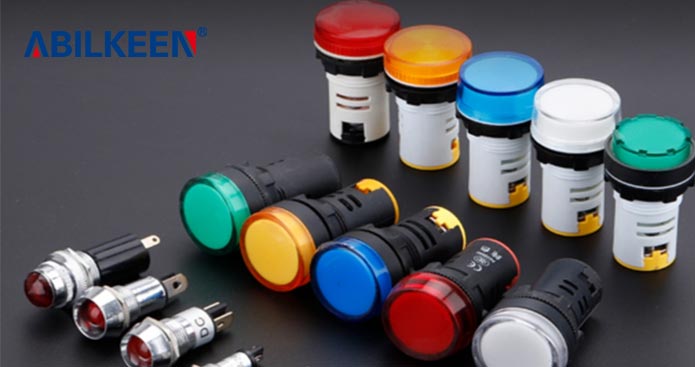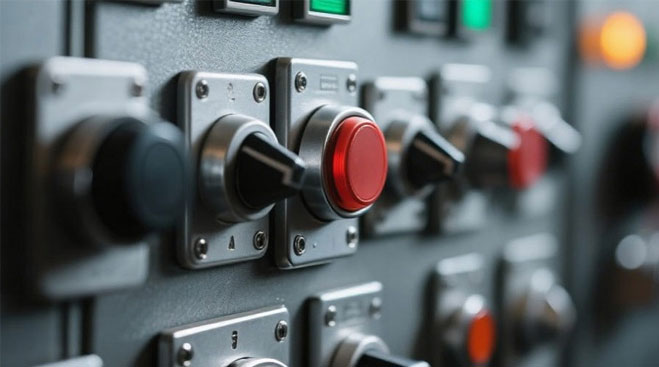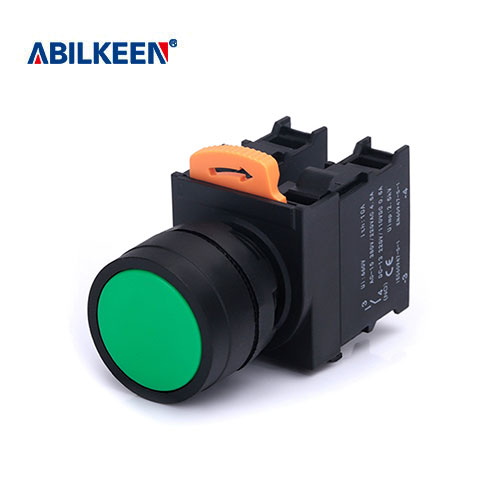What is a Pilot Light Switch and How Does it Work?

 By:Blazers
By:Blazers
In the realm of electrical components that blend functionality with user-friendliness, the pilot light switch stands out as a ubiquitous yet often underappreciated device. From residential bedrooms to commercial workshops, this switch plays a crucial role in simplifying electrical operations and enhancing safety. But what exactly is a pilot light switch, how does it operate, and what are its key advantages and drawbacks? This article breaks down everything you need to know about this essential electrical fixture.
What is a Pilot Light Switch?
A pilot light switch, also known as an indicator light switch, is a specialized electrical switch integrated with a small indicator light (the "pilot light") that signals the operational status of the connected circuit or appliance. Unlike standard switches that only control the flow of electricity, this dual-function device provides visual feedback, letting users instantly know whether the associated light, motor, or other electrical equipment is turned on or off—even from a distance or in low-light conditions.
Available in various designs, including toggle, rocker, and push-button styles, pilot light switches are compatible with most standard electrical systems. They are commonly used for lighting fixtures in large rooms, kitchen appliances like ovens and refrigerators, and industrial machinery, where confirming power status is critical for safety and efficiency.
How Does a Pilot Light Switch Work?
The working principle of a pilot light switch revolves around a simple yet effective integration of a switching mechanism and an indicator light, typically powered by the same electrical circuit it controls. Here’s a step-by-step breakdown of its operation:
-
Circuit Integration: The switch is wired into the main electrical circuit of the connected device. Inside the switch housing, two key components coexist: the switching contact (which controls power flow) and the pilot light (usually an LED, incandescent bulb, or neon lamp) with a current-limiting resistor.
-
Switch Activation: When the switch is flipped to the "On" position, the switching contact closes, allowing electrical current to flow through the circuit to power the appliance (e.g., a light bulb or motor). Simultaneously, a small portion of the current is diverted to the pilot light via the current-limiting resistor—this resistor ensures the light operates safely without drawing excessive power.
-
Visual Indication: The diverted current energizes the pilot light, causing it to illuminate. This light serves as a clear signal that the circuit is active and the appliance is receiving power.
-
Deactivation: When the switch is toggled to the "Off" position, the switching contact opens, cutting off power to both the appliance and the pilot light. The indicator then turns off, confirming that the circuit is de-energized.
It’s worth noting that some advanced models (often used in industrial settings) may have the pilot light wired independently of the main circuit. In these cases, the light remains on to indicate that the switch is in a "ready" state, even if the appliance is disconnected—a feature designed for complex electrical setups.
What is a Pilot Light Switch Used For?
The primary value of a pilot light switch lies in its ability to bridge the gap between control and visibility, making it indispensable in numerous scenarios. Below are its most common applications:
-
Residential Settings: In homes, they are widely used for ceiling lights in large spaces (e.g., basements, garages, or living rooms) where the appliance itself may be out of sight. They also work well for under-cabinet kitchen lighting, bathroom exhaust fans, and even small appliances like space heaters—preventing accidental leave-ons that waste energy or pose fire risks.
-
Commercial and Industrial Environments: In offices, retail stores, and factories, pilot light switches are a safety staple. They control overhead lighting, HVAC systems, and machinery (e.g., conveyor belts, pumps) where workers need to quickly verify power status to avoid accidents. For example, a pilot light on a machine’s switch alerts operators if the equipment is still running before they perform maintenance.
-
Specialized Appliances: Many household and commercial appliances come equipped with built-in pilot light switches. Ovens, microwaves, and refrigerators use them to indicate when the appliance is in operation, while electric water heaters and boilers rely on them to show that the heating element is active.
-
Low-Light or High-Traffic Areas: In hallways, stairwells, or utility rooms—spaces where lighting may be dim—pilot light switches make it easy to locate the switch itself and confirm its status without fumbling in the dark.
Advantages of Pilot Light Switches
The popularity of pilot light switches stems from their unique combination of practicality and safety. Here are their key benefits:
-
Enhanced Safety: By clearly indicating circuit status, they reduce the risk of electrical shocks or fires caused by accidental contact with live equipment. For example, a lit pilot light on a fan switch reminds users the fan is running before they reach into its blades.
-
Energy Efficiency: The visual reminder helps prevent "phantom energy use" by prompting users to turn off unused appliances. This not only lowers electricity bills but also reduces environmental impact.
-
User Convenience: In large or cluttered spaces, the pilot light eliminates the need to check the appliance itself to confirm its status. It also makes the switch easier to find in the dark, a major plus for homes with children or elderly residents.
-
Durability and Reliability: Most pilot light switches use long-lasting LEDs (with a lifespan of up to 50,000 hours) that require minimal maintenance. The switching mechanism is also built to withstand frequent use, making them suitable for high-traffic areas.
-
Easy Installation: They are designed to fit standard electrical boxes, meaning they can replace regular switches without major rewiring—making them a cost-effective upgrade for most homes and businesses.
Disadvantages of Pilot Light Switches
While pilot light switches offer numerous benefits, they are not without limitations. Here are some factors to consider:
-
Minor Energy Draw: Even when the main appliance is off, the pilot light (especially older incandescent models) draws a tiny amount of electricity. While this is negligible for most users, it can add up in buildings with dozens of such switches.
-
Indicator Failure: If the pilot light burns out (common with incandescent bulbs), the switch loses its primary advantage—users can no longer confirm the circuit status visually. While LED models are more durable, they can still fail due to voltage fluctuations.
-
Higher Initial Cost: Pilot light switches are slightly more expensive than standard switches, though the price difference is usually minimal (typically $2–$5 more per unit). For large-scale installations, this can add up.
-
Potential for Misinterpretation: In rare cases, a faulty switch may cause the pilot light to stay on even when the circuit is off (or vice versa), leading to confusion. This issue requires immediate repair to avoid safety risks.
-
Not Ideal for All Applications: For small, easily visible appliances (e.g., a desk lamp), the pilot light is unnecessary and may even be distracting. In such cases, a standard switch is more practical.
Final Thoughts
The pilot light switch is a small but powerful electrical component that enhances safety, convenience, and energy efficiency in homes, offices, and factories. By providing clear visual feedback on circuit status, it solves a common pain point for users and helps prevent costly or dangerous mistakes.
When choosing a pilot light switch, opt for LED models for longer lifespan and lower energy use, and ensure it is rated for the voltage and current of your application. Whether you’re upgrading your home’s lighting system or outfitting a commercial space, this versatile switch is a worthwhile investment that combines functionality with peace of mind.









